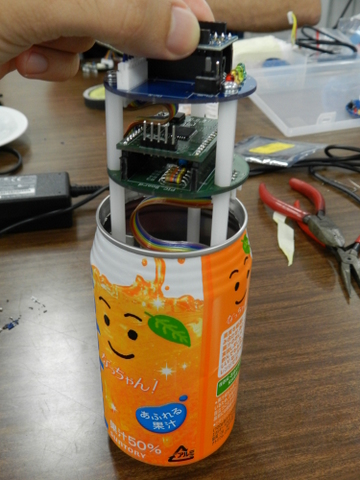Projects
PSat - on course
The PSat (Ping-Pong Satellite) is an initiative at the Signal Processing Lab (LPS) of the University of Sao Paulo (USP) to design and develop an educational picosatellite from scratch. This is a followup of the CLTP 3 (below) where I learned the basic concepts to construct such type of device. This satellite has been devised to fit inside a ping-pong ball. Such constraint requires thorough design and specification. All the embedded electronics have been carefully selected in order to have at least the same performance of the previous CanSat. Although it has started as a satellite project, at LPS we envision "down-to-earth" applications as well, e.g. GPS data-logger and sensors network. The project history and further information can be found in the PSat BLOG.
CanSat - CLTP 3 - 2012
A CanSat (Can Satellite) is a type of picosatellite developed for educational purposes in which the electronic circuit fits into a soda can. In 2012, I attended the CanSat Leader Training Program 3 (CLTP 3), an initiative of UNISEC in Japan, one of the pioneer countries in the CanSat concept development. There I took several courses at the Space Systems Laboratory of The Tokyo Metropolitan University in order to design and build one of those CanSats. Throughtout the construction of the picosatellite, I was exposed to aerospace engineering concepts applied in the design of actual satellites and space probes. As a proof of concept, I was able to launch my CanSat at low altitudes using a small rocket that lifted about 200m (see below). The CanSat sent telemetry signals which were succesfully received in the ground station.

